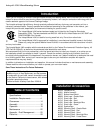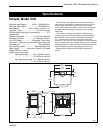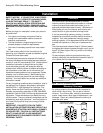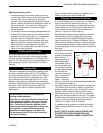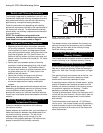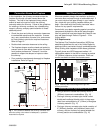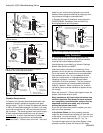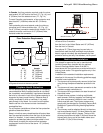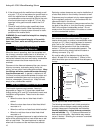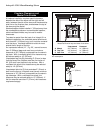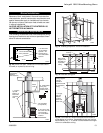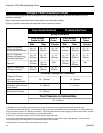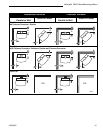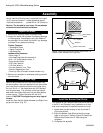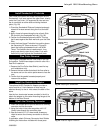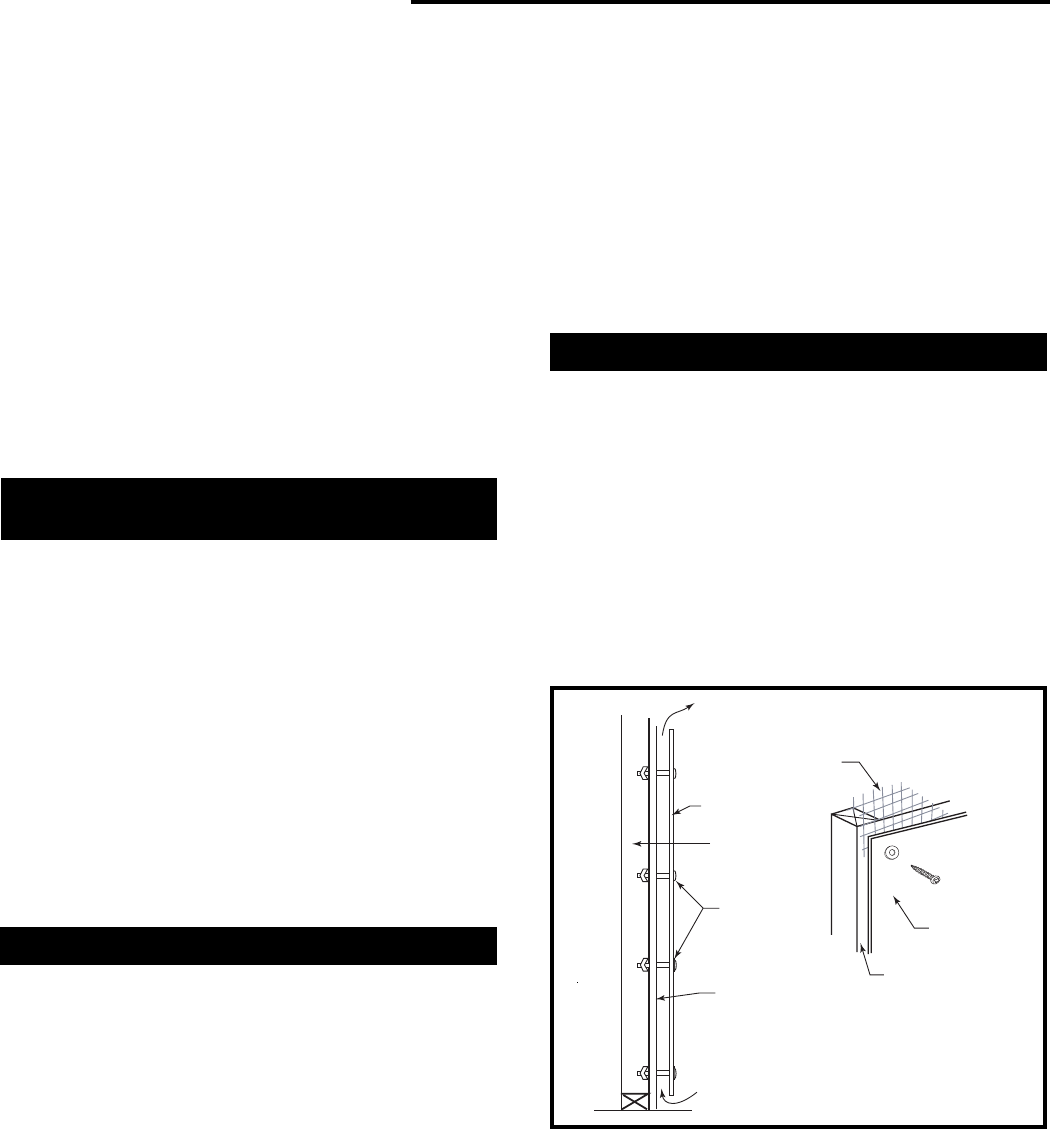
10
Intrepid 1640 Woodburning Stove
30000830
Reducing a stove clearance may require installation of
a listed heat shield on the chimney connector as well.
Clearances may be reduced only by means approved
by the regulatory authority, or in accordance with the
clearances listed in this manual.
When determining clearance, always measure from the
top plate of the stove, or, from the chimney connector
itself, to the adjacent combustible surface. Do not
measure from the heat shields of the stove or connec-
tor to the combustible surface.
Fig. 16 Approved Wall shield construction
Air flow
Wall shield
Air flow
Stud wall
framing
Noncombustible
spacers and
fasteners
Drywall
Screen
Metal Spacer
Shield
ST248
6. If the chimney exits the mobile home through a wall
at a point 7’ (2.1m) or less above the ground level on
which the mobile home is located, a guard or other
noncombustible enclosure must be fitted at the point
of exit and extend up to a height of 7’ (2.1m). Any
openings in this guard must be smaller than 3/4”
(19mm).
7. Check all local building codes, specifically those
related to mobile homes. Other requirements may
be applicable to chimney system removal for trans-
portation of the mobile home.
WARNING: Do not install the Intrepid in a sleeping
room or hallway.
CAUTION: The structural integrity of the mobile
home roof, floor, walls and ceiling must be main-
tained.
Clearance to Surrounding
Combustible Materials
When the stove is operating, both the stoveplate and
the chimney connector radiate heat in all directions. A
safe installation requires that adequate clearance be
maintained between the stove and nearby combustible
materials to ensure that those materials do not
overheat.
Clearance is the distance between either your stove or
chimney connector, and nearby walls, floors, the
ceiling, and any other fixed combustible surface. Keep
furnishings and other combustible materials away
from the stove as well. In general, a distance of 48"
(1219mm) must be maintained between the stove and
moveable combustible items such as drying clothes,
furniture, newspapers, firewood, etc. Keep this area
empty of any combustible material.
Safe Ways To Reduce Clearances
The Intrepid clearance requirements, listed and
diagramed on Pages 14-15, have been established
through testing to UL and ULC standards to meet most
installation configurations. These involve four basic
variables:
• When the
stove has no listed heat shield
in-
stalled.
• When the
stove does have a listed heat shield
mounted on it.
• When the
wall has no listed heat shield
installed.
• When the
wall does have a listed heat shield
mounted on it.
In general, the greatest clearance is required when the
stove will be positioned with no heat shield near a wall
with no heat shield. The least clearance is required
when both the stove and the wall have heat shields.
Wall Shields
Wall shields should be constructed of 24 gauge or
heavier sheet metal, or another noncombustible mate-
rial such as 1/2" (13mm) insulation board or common
brick "laid on flat," with the 3¹⁄₂" (89mm) side down.
Shields must be spaced out from the combustible
surface 1" (25mm) on noncombustible spacers. The
spacers should not be directly behind the stove or
chimney connector. (Fig. 16)
Air must be able to flow between the wall and the
shield. At least 50% of the bottom 1" (25mm) of the
shield should be open and the shield must be open at
the top.
The following examples of wall shield construction
illustrate common designs used to safely achieve
reduced clearances to combustible wall materials.
Parallel installation, vertical chimney connector,
two wall shields. Fig. 17: Reduced clearances for
both rear and side walls. Wall shields may meet at
corner if desired. Shielding for connector is centered
behind connector.



